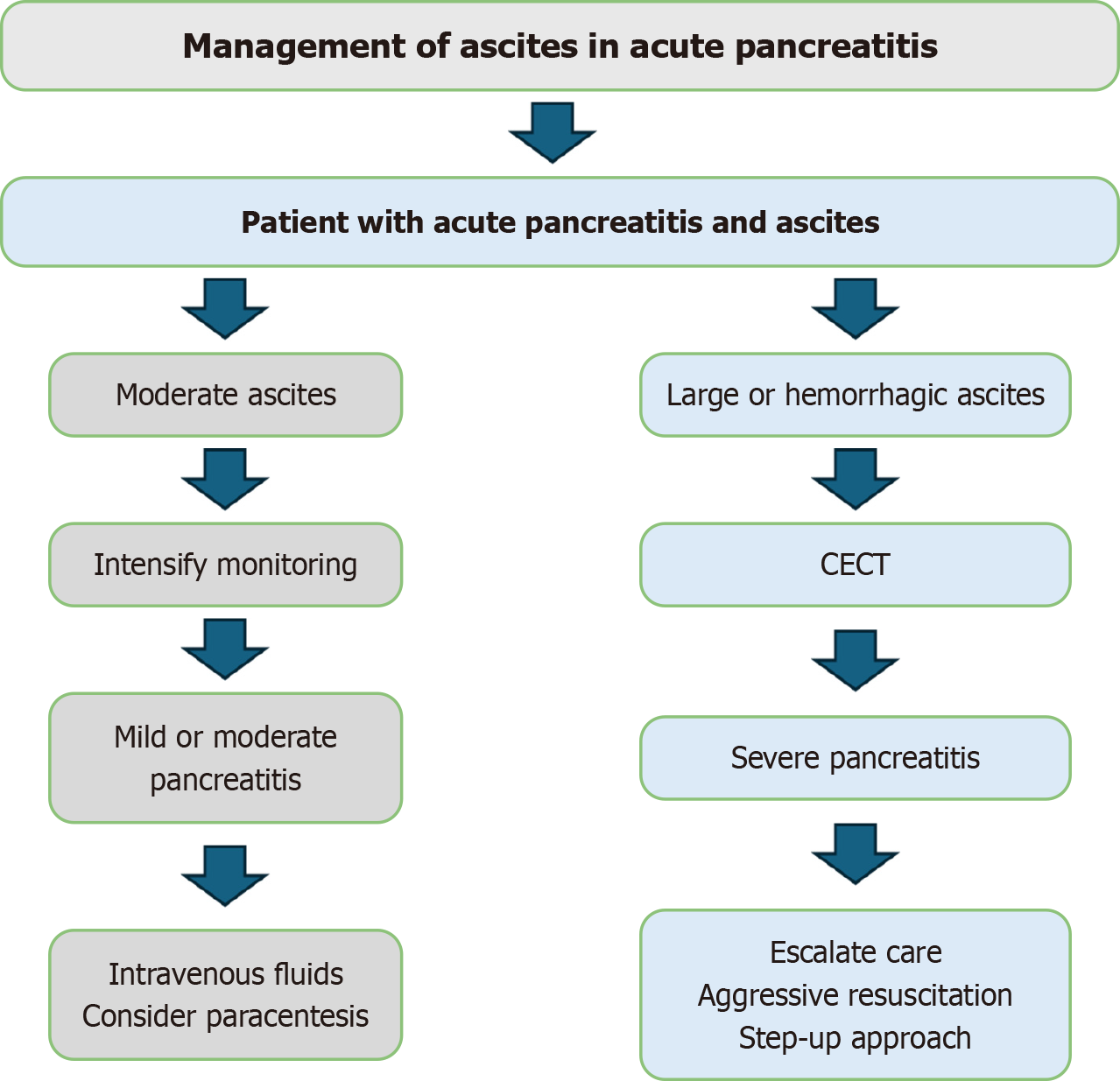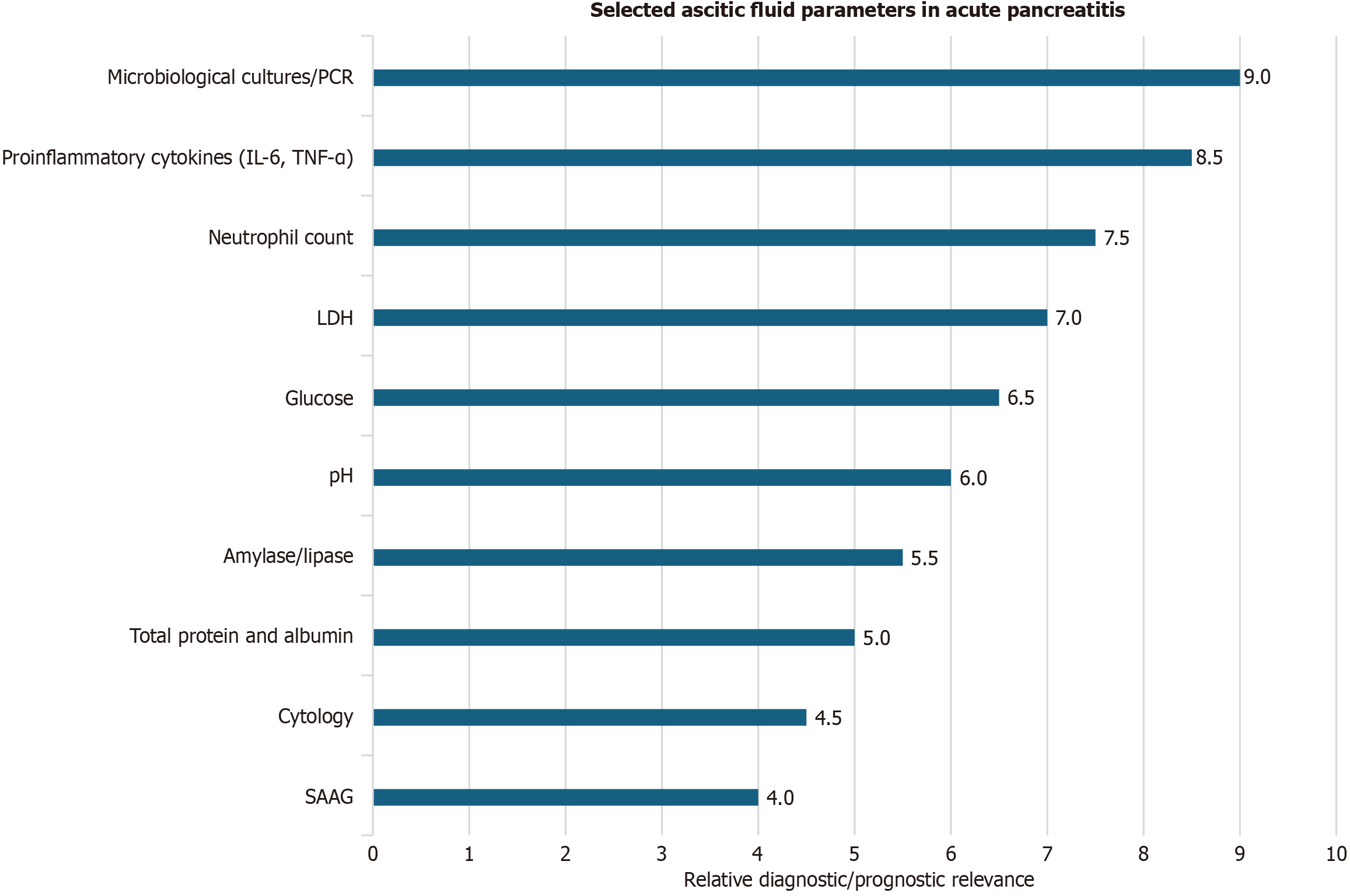Copyright
©The Author(s) 2025.
World J Gastroenterol. Nov 21, 2025; 31(43): 112797
Published online Nov 21, 2025. doi: 10.3748/wjg.v31.i43.112797
Published online Nov 21, 2025. doi: 10.3748/wjg.v31.i43.112797
Figure 1 Management of ascites in acute pancreatitis.
The algorithm starts with early identification of ascites (usually by contrast-enhanced CT). If ascites is small and the patient is stable, supportive treatment and monitoring are sufficient. In cases of tense or hemorrhagic ascites or when abdominal compartment syndrome is suspected, diagnostic and therapeutic paracentesis is indicated. If persistent high-volume output, infected fluid, or ductal disruption is confirmed, escalation to percutaneous catheter drainage or endoscopic therapy (endoscopic retrograde cholangiopancreatography with stenting) is recommended. This step-up approach allows timely intervention while avoiding unnecessary invasive procedures. CECT: Contrast-enhanced CT.
Figure 2 Selected ascitic fluid parameters with potential diagnostic and prognostic value in acute pancreatitis.
Microbiological cultures/PCR are critical for detecting superinfection or infected necrosis. Proinflammatory cytokines (interleukin-6, tumor necrosis factor-alpha) are specific indicators of systemic inflammation and risk of organ failure though less available and more costly. Neutrophil count reflects inflammatory burden and is useful in resource-limited settings. Lactate dehydrogenase is inexpensive and widely available but relatively nonspecific. Glucose and pH at reduced levels suggest infection. Amylase/Lipase support the diagnosis of pancreatic ascites due to ductal disruption. Total protein and albumin characterize the exudative nature and indicate vascular permeability. Serum-ascites albumin gradient differentiates pancreatic ascites from portal hypertension. Cytology excludes malignancy. When interpreted together, combinations such as LDH plus neutrophil count may increase predictive accuracy. IL-6: Interleukin-6; TNF: Tumor necrosis factor; LDH: Lactate dehydrogenase; SAAG: Serum-ascites albumin gradient.
- Citation: Zerem E, Zerem D, Vila Š, Bajgorić S. Ascites in acute pancreatitis: A window into disease severity. World J Gastroenterol 2025; 31(43): 112797
- URL: https://www.wjgnet.com/1007-9327/full/v31/i43/112797.htm
- DOI: https://dx.doi.org/10.3748/wjg.v31.i43.112797














